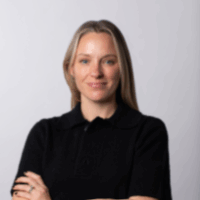In a move some might see as untraditional for academia, Northeastern University has turned to branding to create an image for the school and boost enrollment.
Boston-based Northeastern was almost bankrupt in the early nineties, noted Brian Kenny, vice president of marketing and communications. To turn things around, the school looked at reviewing its admissions policy to bring in a better class of students and improve the campus facilities. When the school’s fortunes improved by 2001, the president decided it was time to tell the story in marketing efforts.
The first phase was creating a campaign based on the promise of what prospective students should expect from their Northeastern experience.
This included major media buys in mediums like newspapers and billboards across the country, to create a nationwide presence for the school.
Last year, the school began the second phase of its branding efforts, to target specific segments of its audience.
While 90% of Northeastern’s alumni are concentrated in the Boston area, the school hadn’t done a good job of connecting with that constituency. Likewise, the school hadn’t kept up relationships with the countless companies who place students in jobs as part of the university’s co-op education program.
Marketing is also being done to presidents and administrators at other colleges and universities to work on improving Northeastern’s ranking among schools in the United States. Each year, 10 universities are targeted for the school to cultivate relationships.
Marketing in academia can be challenging, acknowledged Kenny, speaking at the New England Direct Marketing Association’s annual conference in Waltham, MA on Thursday. Faculty members are skeptical about why dollars should go to marketing the school, rather than to improving classrooms or funding teacher salaries.
The school also faces technology challenges: Some information is stored on old mainframe computers. The data could be very useful to marketing, but is fairly inaccessible.
The school’s marketing efforts are also decentralized – Kenny oversees the largest group, but every individual school and business unit within the university system has its own marketing staff.
This can make maintaining an integrated image for the school difficult. He cited the fact that numerous versions of the Northeastern Husky mascot exist across different facets of the organization.
To tie efforts together, Kenny instituted monthly communications council meetings to exchange ides and generate a community feel for the marketing staffs.
“About 50% of my job is going out and talking to people on campus with a marketing function,” he said.
Budgets are slim, he noted. “We need to find ways to do more with the same – or less.”
One way the school is doing this is by looking at ways to leverage virtual marketing opportunities online. It’s a natural, Kenny said, “since students are so comfortable with technology.”
Maintaining a strong image for the school is essential, given that over the next year or so the number of high school seniors heading off to college will peak and then drop off for about the next eight years.
“Direct marketing is more important now that we’ve created the brand image,” he noted.
 Network
Network

